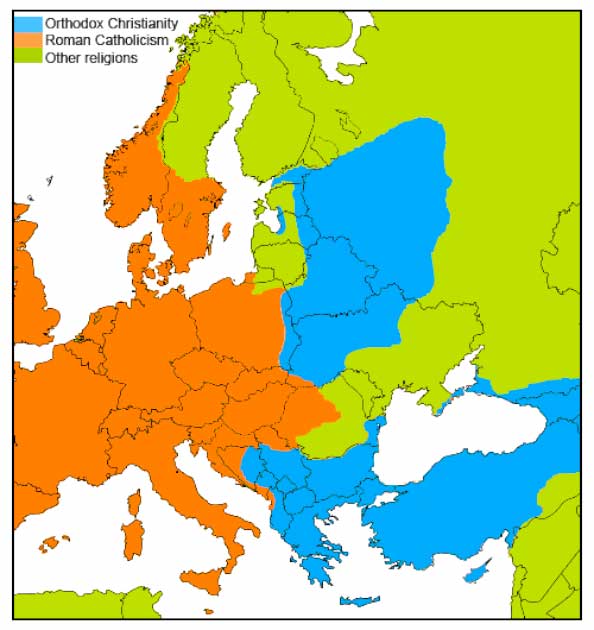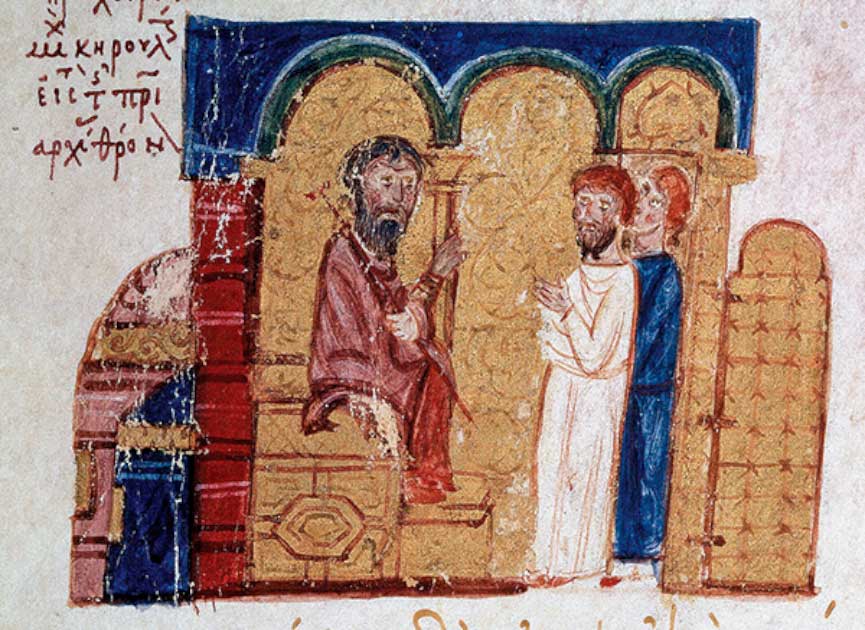Christianity has changed greatly in the two millennia of its existence, as church leaders have grappled with control and doctrine has slowly crystallized into dogma. The growing pains were brutal: whole populations of European countries have been declared heretical and exterminated, sometimes for underhand or material purposes, sometimes over simple disagreements that occurred far away and long ago.
In the course of establishing what is seen as the Christian truth, many have been burned alive, many more killed, and Europe plunged into a religious upheaval that only the Enlightenment of the 17th and 18th century finally calmed. But for all the damage done by those seeking to wrest control of Europe’s principal religion for themselves, none was perhaps so damaging to the church itself as the Great Schism.
Also known as the East-West Schism, this was a defining moment in the history of Christianity. Although it ultimately occurred in 1054 it was the culmination of many things that happened before it. There were already differences between the East and the West interpretations of Christianity.
It was only in 1054 that the time bomb of disagreement finally blew, dividing the church in two. Its repercussions are still felt today.
What Happened?
To set the stage: in the 11th century there were two key figures at the heart of the Christian church: the Pope in Rome and the Patriarch of Constantinople. Having two heads can be difficult to manage, and the power struggle between these two eventually led to each excommunicating the other: both effectively proclaimed themselves head of the church and banished the other.
Surely the disagreements must have been weighty, as each fought for the immortal souls of their congregation? Well, not entirely: the key disagreements between the two were on the origin of the Holy Spirit, and whether to use yeast in the bread when giving the sacrament in church.

Or course, there were other more material agreements, and perhaps here we see the material fight for power masked by doctrinal arguments. The Pope believed he had universal authority over all Christians. Constantinople did not like that, and instead felt the religion of their territory was equal, or at least autonomous.
- Pope Joan: Did The Church Elect a Female Pope?
- The Holy Foreskin: Where is the Last Piece of the Body of Christ?
Each declaring the other heretical acted as a severe blow on the communication channels between the eastern and western Churches. Communications broke down entirely, leading the two sides at loggerheads.
Since 1054, the Great Schism has had a profound effect on how religion and culture have developed in the east and the west. The east and the west no longer reconciled, and the two sects of Christianity remained separate from each other.
Since the 11th century, there have been very few efforts at healing the divide between the two sects. It was only after the 20th century that there were efforts at clarifying the divide and healing the cracks between the two sides of the same religion.
The divide created by the Great Schism, between the Orthodox and Catholic churches, persists to this day. Although there have been efforts to reduce the ex-communication between the two types of churches, they are effectively separate religions.
The Political Origins of the Great Schism
The Great Schism did not just divide a religion, but also broke a great empire in two. But here again the roots can be traced back hundreds of years, to the Roman Empire in the 4th century. Under Emperor Constantine, the Roman Empire had spread from the west to the east, with the power center and capital being transferred to the City of Constantinople.
Therefore, Constantinople became the most powerful city, replacing the city of Rome, but this did not work. By the end of 4th century AD, the Roman Empire was divided into a clear distinction between the Eastern and Western Roman Empires. The last Roman Emperor to rule the united kingdom of Rome was Emperor Theodosius I. After his death in 395, the Roman empire disintegrated, and the western empire went on to collapse.
In the early 5th century, Western Roman Empire was invaded by Germanic Tribes who conquered Rome and occupied the Italian peninsula for centuries. The Eastern Roman Empire endured however, surviving for many centuries after that.
The differences in east and west started to become apparent as the socio-political and cultural atmosphere changed after the Germanic invasion. The differences between the churches in the east and the west became more apparent as there were linguistic differences too.
While eastern Roman churches followed Greek as the language of communication, Western churches followed the language of Latin. These differences are important to note as these culminated in the divide between the two sides of Christianity, with the doctrines of each seeming alien to the other because of their lack of shared language.
Other Differences
Furthermore, there were significant political developments in the east. As the Roman empire started to fracture, new states emerged and were individually ruled by Roman kings. On the other hand, the political supremacy of the Western Roman Empire waned out.

The kings of the Eastern Roman Empire or the Holy Roman Empire were crowned by the Pope in Rome. As the west became weakened however, the patriarchal churches in East Roman Empire started to not recognize the superiority of western Roman churches.
In this way, the Great Schism appears inevitable. The church had two heads distant from each other, used different languages for their religion, and the old order was slowly weakened with the Constantinople church on the ascendant. But was that the entire reason for the split, or were there genuine religious differences as well?
Looking at the theological differences that led to the East-West Schism, one in particular stands out. The western Church treatment of the Holy Spirit, and the explicit inclusion of wording which notes it came in part from Jesus, was the core problem for Constantinople.
If the Holy Spirit comes only from God the Father, the Pope argued, then that does not give God the Son his due credit. Constantinople countered that to given partial credit like this to Jesus seriously undermined worship of God the Father, which was blasphemy.
A knotty problem, then. Was this enough to split the church in two? After all, previous councils of church leaders had for centuries discussed such questions of scripture and found common solutions that all agreed on.
Perhaps, this time, the distance was too great, the Christian empire too weak and divided, for the old order to survive. The Great Schism had religious underpinnings, but was a statement of the new reality rather than a true religious impasse.
Top Image: “The Great Schism” by Jehan Georges Vibert, painted in 1874: 800 years and no progress. Source: Jehan Georges Vibert / Public Domain.
By Bipin Dimri